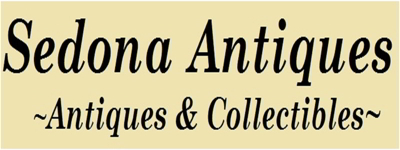Antique Dolls
The history of modern doll making is largely the history of the materials that make up dolls. Over the centuries, doll makers have used bisque, china, paper mache, wood, wax, terra-cotta, alabaster, rags, leather, cornhusks, gold and composition as materials. All dolls created before approximately 1930 are considered antique.
Early Dolls
Most of the early dolls were made in England by meticulous craftsmen who carved the dolls from wood, painted their features and also fashioned the clothing. These wood dolls from England form the 18th and 19th centuries are known as "Queen Anne" dolls. Values of these dolls can be very high, running from $1000 to $1500 for early 19th century dolls to over $40,000 for dolls made in the late 17th century. Prices are of course, dependent on condition.
Paper Mache
Paper mache dolls were made from the beginning of the 19th century through the early 20th century and were mass produced in France, Germany and the United States. These dolls provided a less expensive alternative to wood dolls since molds were used to speed up production. Most paper mache dolls have painted eyes, molded hair which is painted black and wooden limbs with a child's body. The rare paper mache dolls have glass eyes.
Wax Dolls
The process of making a wax doll is by pouring liquid into a mold that had been heated and then setting the hair and eyes into the head. Bodies of wax dolls ere usually made of stuffed cloth with wax arms and legs. Wax dolls ere also made with paper mache or plaster reinforcement in both Germany and England. Prices of poured wax dolls from mid-19th century England are in the $1000 to $2000 range while earlier dolls fetch much higher prices.
Composition Dolls
An alternative to wood was developed in the 1800's and was called composition. The word refers to wood pulp and paste that were molded under pressure, creating a durable doll that could be mass produced. In America, composition dolls replaced the more expensive and very fragile, European bisque doll, made of fired yet unglazed ceramic.
Porcelain Dolls
Porcelain became popular at the beginning of the 19th century. The process of making porcelain dolls is by firing special clays in a kiln at more than 2300 degrees Fahrenheit. Only a few clays can withstand firing at such high temperatures. Bisque and china dolls are both known as porcelain, the difference being that bisque is unglazed while china is glazed.
French Bebes
The French Bebe was popular in the 1880's and has become a highly sought after doll today. The dolls were made to represent children and were quite revolutionary for their time since most dolls up until that time were made to represent adults. Although the French dolls were unrivaled in their artistry, the German bisque dolls became quite popular because they were not as expensive. Today, prices for French Bebes vary widely, depending on quality.
Rag Dolls
Mothers made rag dolls for their children for centuries. The term rag doll refers to dolls made of any fabric. In the 1850's, English and American manufacturers commercially introduced rag dolls. Children loved their rag dolls because many times the doll was the child's first toy.
Links of Interest
Antique and Vintage Doll Collecting Terminology - Offers glossary of terms used for collections of antique and vintage figures from About.com. Includes archived articles, and forum.
Antique Doll Bulletin Board - Provides forum for collectors to exchange information regarding vintage figures. Includes wanted, sale, and trade list.
Antiques Roadshow: Antique Speak - Composition - Provides articles and history. Includes tips, appraisal information, schedule, and links.
D is for Dollikin - Collector shares history and photographs of characters created by Uneeda. Provides information on clones, Triki Miki, and Action Girl by Palitoy. Includes links.
Dollikins Fashion Dolls - Personal collector shares history and information on the Uneeda characters from the fifties. Includes tips on identification, and links.
Timeless Treasures: The Story of Dolls in Canada - Canadian Museum of Civilizations featured exhibit include rare antiques, Inuit, First Nations, china, composition, and modern artists. Includes gallery.
Tips for Conserving Your Composition Doll - Minnesota Historical Society's object conservator offers everyday tips for preserving. Includes photographs, and information.
Home Page | Place Order |
Copyright © 1999-2016
Sedona Antiques. All Rights Reserved. No part of this web site, images, graphics, text, or code may be reproduced without the express written permission of Sedona Antiques. Permission is granted to link this website.
